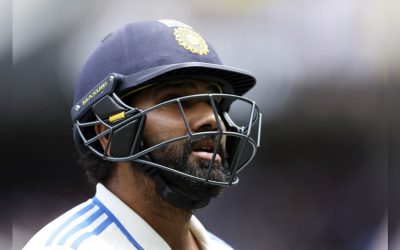Children’s Day: Schools must speak the child’s language and not the more remote ‘standard’ language

Education in any community must begin with an understanding of that community. When the British introduced their school system, they studied India’s languages and cultures. They emphasised on grammar and local languages even as they promoted English-medium education. They produced a large number of grammar books and dictionaries for many Indian languages, including smaller and tribal ones.
Modern India has made education a fundamental right. The National Education Policy stresses that children should learn in their mother tongue. Linguists affirm that mother-tongue education supports both intellectual and emotional growth. Among the many reasons for the region’s educational backwardness, language stands out as a crucial one.
Education should lead learners from ‘the known to the unknown’. When children are taught unfamiliar concepts in an unfamiliar language, learning suffers. Therefore, connecting the child’s home language with the language of textbooks is vital for real educational growth. Language is the most crucial medium in education, yet it is rarely treated with the seriousness it deserves.
Peculiar case of Hyderabad-Karnataka region
The Hyderabad-Karnataka region represents one of the most complex and intricate linguistic environments in Karnataka. Unlike other linguistically diverse regions, such as the coastal belt, the linguistic density and diversity here have deeper historical and socio-cultural roots. Any planning, especially in education and textbook design, must recognise this multilingual reality.
Multi-lingualism means that several languages coexist in mutual influence, exchanging vocabulary and grammar, and shaping social spaces through interaction. Without understanding these dynamics, no educational system can do justice to the region.
Kannada itself comprises several dialects, many of which show considerable gaps in mutual intelligibility. The Standard Kannada used in textbooks has little in common with the spoken varieties of the region and differs significantly from most other dialects across the State. Moreover, exposure to Standard Kannada varies widely from region to region, with the Hyderabad-Karnataka area remaining among the least exposed compared to any other part of the State.
Scholars have identified at least four dialects in this region — Bidar Kannada, Kalaburagi Kannada, Raichur-Yadgir Kannada, and Maski Kannada. These show significant differences not only from what is called ‘Standard Kannada’ but also among themselves. Field linguists often report that local speakers say, ‘We don’t understand your Kannada’, revealing the wide gap. This gap is evident in vocabulary, grammar, and intonation.
These dialects, which shape children’s daily lives, begin to disappear as soon as they enter school, often becoming objects of shame. Many teachers themselves struggle with ‘Standard Kannada’, yet the authority of textbook Kannada compels them to devalue their own language.
Local languages and dialects receive little attention in schools. Consequently, the world children know at home and the world presented in textbooks remain disconnected. When students enter school, they encounter an unfamiliar linguistic environment without any bridge to help them transition. The absence of such efforts creates a gap between school life and real life, leaving children uncertain and disengaged.
This bridging exercise needs to begin at the primary level to help students connect their home language with Standard Kannada, or the Kannada used in textbooks. Once children are able to engage with education through their own linguistic variety, it will lead to a significant qualitative improvement in learning outcomes.
From the very first stage of schooling, children face an alien language environment. This alienation breeds disinterest and ultimately drives many to drop out. The system labels them as ‘school dropouts’, masking its own failures. In reality, they are ‘pushed out’ rather than ‘dropped out’. Many students struggle until the 10th grade and finally part ways with education after receiving a fail certificate. Ironically, many of these so-called failures succeed later in life.
Some students manage to pass the 10th standard through individual skill, talent, or special training. Yet many others develop psychological and social difficulties. Disconnecting children from their native dialects and forcing them to adapt to Standard Kannada without sensitivity to their linguistic background, at the early age of the child, has a profound psychological impact, an issue never systematically studied in this region. Such neglect continues to cause silent damage to entire generations.
What can be done
As a result, education remains largely inaccessible to the children of Hyderabad-Karnataka, leaving them an educationally deprived community. Therefore, urgent, region-specific measures are essential to address this situation. Some key steps include:
1. Studying the region’s linguistic environment to shape curriculum design.
2. Documenting Kannada dialects and integrating them into the curriculum.
3. Reflecting regional language and culture in textbook content and examples.
4. Encouraging the use of mother tongues or local dialects in early schooling.
5. Appointing local teachers familiar with regional dialects and cultures.
6. Developing bridge courses to help students transition from dialects to Standard Kannada or English.
7. Linking children’s home-language worldview with formal education.
8. Preparing grammars of regional dialects.
9. Compiling dictionaries of local dialects.
10. Creating teacher-training materials for language transition programs.
Genuine progress
Implementing these measures can create an environment where every child in the region can access education as a true fundamental right, ensuring genuine educational progress. To achieve this, a well-structured pilot program should be designed by scholars engaged in global-level research on linguistics and education.
Supporting these arguments, the class 10 results in the region consistently show low performance. All taluks of the Hyderabad-Karnataka region rank near the bottom of the State list. Sindhanur (64.18%) and Bhalki (58.36%) are the only ones within the top 150, while most others fall below rank 170, reflecting widespread educational lag.
District-level results are equally poor, Kalaburagi (34.58%), Yadgir (44.21%), Raichur (45.23%), Bidar (49.13%), and Koppal (50.27%).
In contrast, coastal districts such as Dakshina Kannada (87.58%), Udupi (83.40%), and Uttara Kannada (80.34%) lead the State, highlighting stark educational disparities.
(The author is Professor of Kannada, Central University of Karnataka, Kalaburagi)


